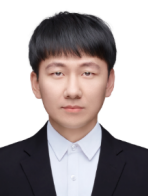Invited Speakers

Xun Jin received the Ph.D. degree from Sangmyung University, South Korea. He was a researcher at Creative Contents Labs of Sangmyung University. He is currently an Associate Professor in Department of Computer Science and Technology in Yanbian University, China. He is the director of Artificial Intelligence Teaching and Research Section of Yanbian University. He serves as a reviewer for several international journals such as Electronics, Mathematics and Engineering Applications of Artificial Intelligence. He has extensive research experience in the field of multimedia digital content security, including digital watermarking, plagiarism detection, and copyright protection for images, videos, texts, and other digital contents. In recent years, through the research on feature engineering-based copyright authentication technology, valuable achievements have been made in the detection of digital contents such as comics, 3D models, music, and games.
Speech Title: "Enhancing Digital Image Copyright Protection with Neural Network Models"
Abstract: The theft of multimedia digital content has caused significant economic losses to copyright owners. The research on copyright protection technology can solve copyright disputes and warn illegal infringers to stop infringing, ultimately reducing the occurrence of infringement incidents. In this talk, we will take digital images as an example to discuss copyright protection technologies based on neural network models. These technologies include image watermarking and image retrieval. Unlike general watermarking and retrieval technologies, copyright protection technologies require strong anti-interference performance, as illegal infringers can apply certain interference to image works, making it difficult for detection systems to detect pirated versions. Therefore, we explored neural network model design methods that enhance the performance of copyright protection. In this talk, we will discuss new copyright protection schemes studied in our research projects.

Dr
Xiangyang Ju
NHS Greater
Glasgow and Clyde, UK
Dr. Ju is a leading researcher in 3D shape capture, modelling, and medical image analysis with over 30 years of experience. He pioneered high-resolution 3D photogrammetry for live animal and human scanning, developing an innovative shape conformation method (EPSRC GR/M47676/01) to establish dense correspondence for morphometric analysis. This work became core IP for a spin-out company commercializing 3D imaging technologies. Under a BBSRC grant (17/D1534), he collaborated with Silsoe Research Institute to refine 3D conformation techniques, correlating livestock growth scans with genotype and diet to predict meat/fat yields. His research also advanced 3D facial expression transfer (RGU RDI 2006) and multi-view 3D photogrammetry integration, improving dynamic shape reconstruction. Currently, Dr. Ju applies 3D/4D imaging to oral/maxillofacial surgery planning, OCT for intravascular/retinal diagnostics, and PET/CT analysis for lung cancer. His interdisciplinary work bridges computer graphics, biomedical engineering, and clinical practice, addressing real-world challenges in healthcare and industry. With numerous peer-reviewed publications and collaborations, he drives innovation at the intersection of imaging technology and computational analysis.